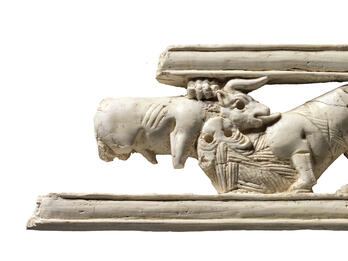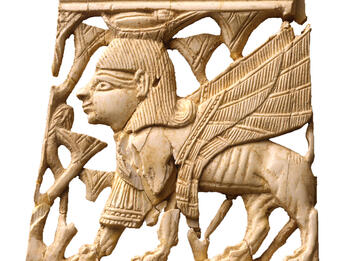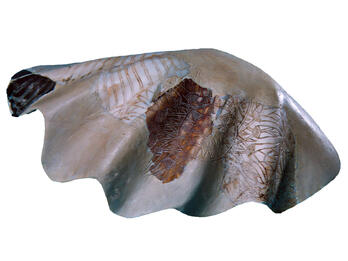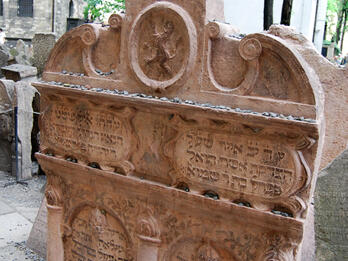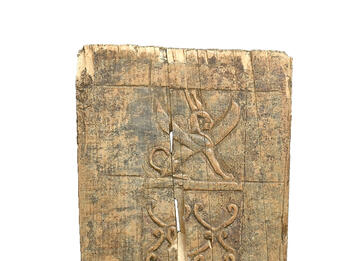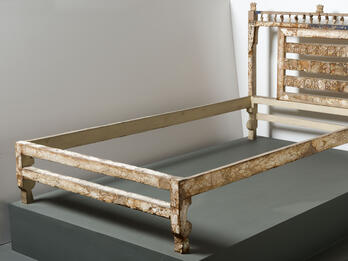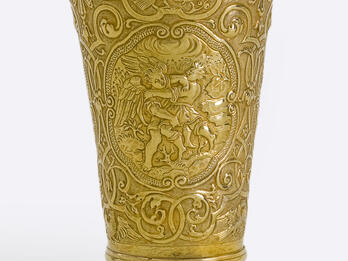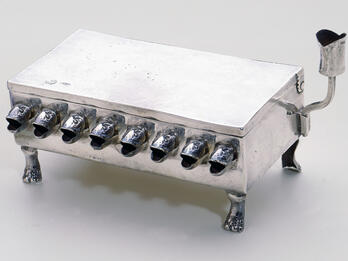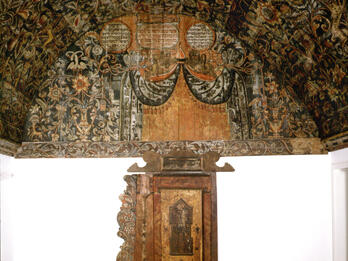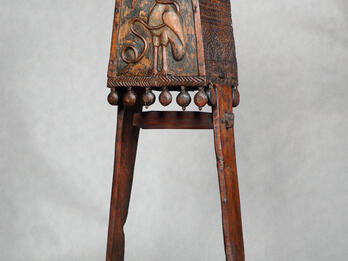Showing Results 1 - 10 of 25
Restricted
Image
The battle between a wild bull and a lion, which are among the most powerful animals, is a common theme in ancient Near Eastern art. In this panel from Samaria, the lion’s claws are embedded in the…
Places:
Samaria, Land of Israel (Samaria, Israel)
Date:
Iron Age IIA–IIB, 9th–8th Century BCE
Subjects:
Categories:
Restricted
Image
Sphinxes are among the most ubiquitous images on Iron Age Levantine ivories. The sphinx combines the features of several animals; it has the head of a human, the wings of an eagle, and the body of a…
Places:
Samaria, Land of Israel (Samaria, Israel)
Date:
Iron Age IIA–IIB, 9th–8th Century BCE
Subjects:
Categories:
Restricted
Image
Engraved tridacna (clam) shells like this one from Arad seem to have been used as cosmetic containers in the Near East and Mediterranean worlds in the late seventh and early sixth centuries BCE. This…
Places:
Arad, Land of Israel (Tel ‘Arad, Israel)
Date:
Iron Age IIC, Second Half of 7th–Early 6th Century BCE
Subjects:
Categories:
Public Access
Image
The gravestone of Judah Loew (known as the Maharal) and his wife, Pearl (1528–1610) is located in the Old Jewish Cemetery of the Jewish quarter in Prague. A prominent scholar and kabbalist, the…
Places:
Prague, Holy Roman Empire (Prague, Czech Republic)
Date:
1609 and 1610
Categories:
Restricted
Image
The top register of this plaque from Hazor depicts a crouching winged sphinx wearing the double crown of Upper and Lower Egypt. The lower register shows two stylized three-tiered palmettes. The…
Places:
Hazor, Land of Israel (Tel Hazor, Israel)
Date:
Iron Age IIB, first half of 8th century BCE
Subjects:
Categories:
Restricted
Image
Ivory-inlaid bed, Salamis, Cyprus, 8th or 7th century BCE. Among the most beautiful items surviving from Israel and neighboring countries are the ivory carvings used for decorating furniture, among…
Places:
Salamis, Cyprus (Famagusta, Cyprus)
Date:
Iron Age II, 8th–7th Century BCE
Subjects:
Categories:
Restricted
Image
This gold, repoussé, punched, and engraved goblet was used for kiddush (the ritual sanctification of the Sabbath over wine) in the home of the Speyers, a prominent and wealthy family in the Jewish…
Contributor:
Artist Unknown
Places:
Frankfurt am Main, Holy Roman Empire (Frankfurt am Main, Germany)
Date:
Early 18th Century
Subjects:
Categories:
Public Access
Image
This Hanukkah lamp from Frankfurt am Main, like the earliest known silver Hanukkah lamps made in Germany, is shaped like a chest and resembles inkwells of the period. This one is relatively…
Contributor:
Caspar Birckenholtz
Places:
Frankfurt am Main, Holy Roman Empire (Frankfurt am Main, Germany)
Date:
1661–1690
Subjects:
Categories:
Restricted
Image
The interior of the wooden Horb synagogue (completed in 1735) is richly decorated in typical East European style, which artist Eliezer Zusman, originally from Brody, introduced to southern Germany…
Contributor:
Eliezer Zusman of Brody
Places:
Horb am Main, Holy Roman Empire (Marktzeuln, Germany)
Date:
1735
Subjects:
Categories:
Public Access
Image
These two lecterns are from Jablonów in the southern part of eastern Galicia and may have graced the town’s wooden synagogue, which was built as early as 1674. Carved from wood, and standing on two…
Contributor:
Artist Unknown
Places:
Jabłonów, Polish-Lithuanian Commonwealth (Yablonov, Ukraine)
Date:
17th or 18th Century


